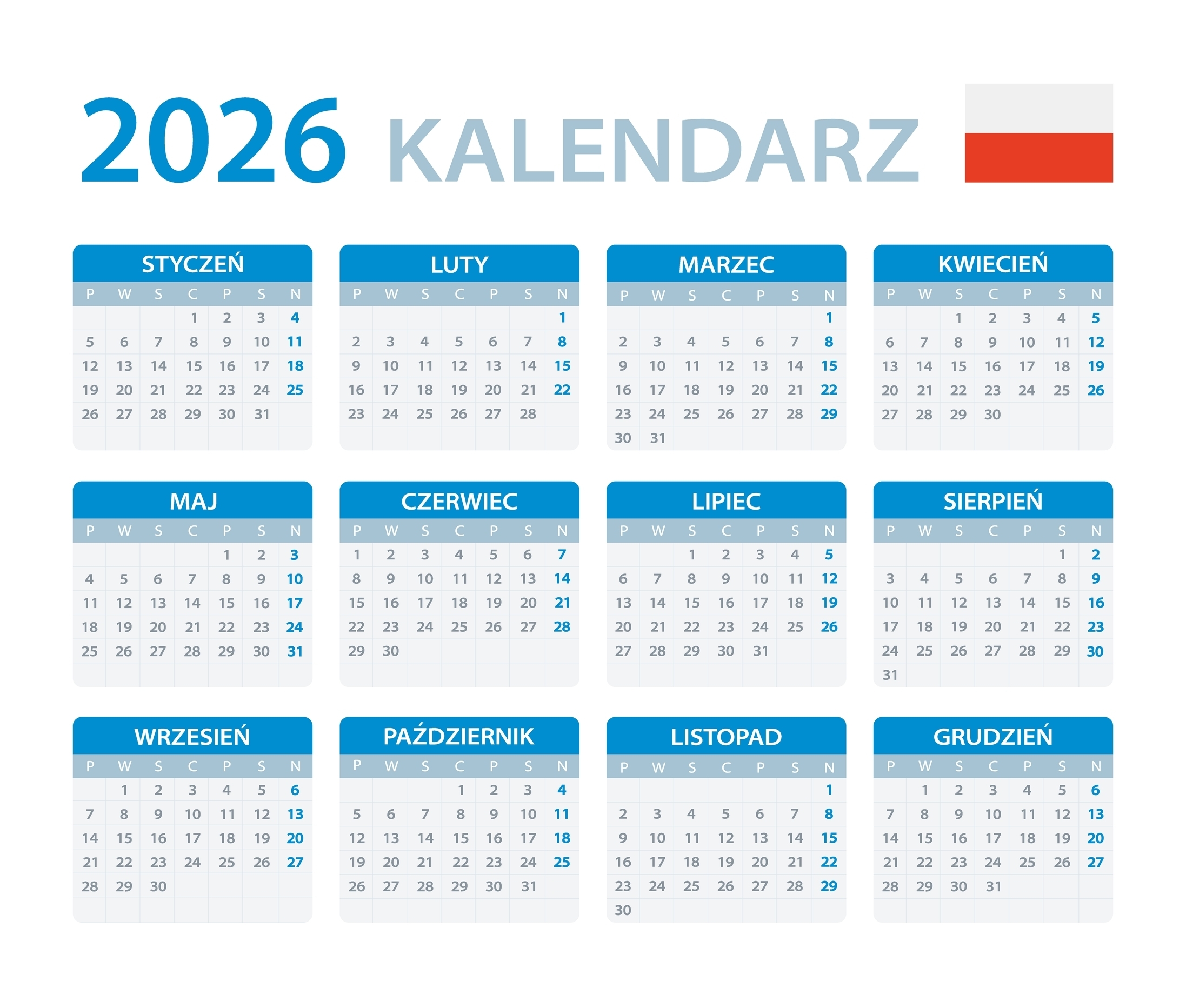
{'title': 'Unlocking City Charm: A Definitive Guide to Urban Walkability Index', 'sections': [{'heading': 'Introduction to Urban Walkability', 'content': 'Urban walkability refers to how friendly an area is to walking. It encompasses a variety of factors, including the availability and quality of pedestrian pathways, safety, accessibility, and connectivity to key destinations. Walkable cities are known for their ability to promote healthier lifestyles, reduce congestion, and enhance the local economy. As cities continue to grow and evolve, understanding and improving walkability has become a crucial aspect of urban planning.'}, {'heading': 'The Importance of Walkability in Cities', 'content': 'Walkability significantly impacts the quality of life in urban environments. Walkable cities tend to have lower pollution levels, reduced carbon footprints, and improved public health outcomes. Additionally, they often boast vibrant local economies as pedestrians are more likely to shop at local businesses. Walkability also enhances social interactions, providing opportunities for community engagement and fostering a sense of belonging among residents.'}, {'heading': 'Key Components of Urban Walkability', 'content': 'Several key components contribute to urban walkability: pedestrian infrastructure, safety, connectivity, accessibility, and land use diversity. Pedestrian infrastructure includes sidewalks, crosswalks, and pedestrian-only zones. Safety is ensured through proper lighting, traffic calming measures, and pedestrian-friendly traffic signals. Connectivity refers to the ease with which pedestrians can reach various destinations. Accessibility ensures that routes are usable by all individuals, including those with disabilities. Land use diversity involves having a mix of residential, commercial, and recreational areas within walking distance.'}, {'heading': 'Measuring the Walkability Index', 'content': 'The walkability index is a quantitative measure of how pedestrian-friendly an area is. It typically includes metrics such as street connectivity, land use mix, residential density, and the presence of pedestrian amenities. Tools like Walk Score, which rates locations based on their proximity to amenities, public transportation, and walking routes, are widely used. A high walkability score indicates that amenities are easily accessible on foot, promoting a pedestrian-friendly environment.'}, {'heading': 'Case Study: Walkability in Copenhagen', 'content': "Copenhagen is often cited as one of the most walkable cities in the world. The city prioritizes pedestrians and cyclists, with extensive networks of pedestrian-only streets and bike lanes. Public spaces are designed to encourage walking and socializing, contributing to the city's high quality of life. The successful integration of pedestrian infrastructure with public transportation has made Copenhagen a model for urban walkability."}, {'heading': 'Challenges in Improving Urban Walkability', 'content': 'Improving urban walkability presents several challenges. Existing infrastructure may need substantial redesign to accommodate pedestrians. Space constraints, especially in densely populated areas, can limit the expansion of pedestrian zones. Balancing the needs of pedestrians with vehicular traffic and public transportation requires careful planning. Additionally, financing such projects can be difficult, particularly in cities with limited budgets.'}, {'heading': 'Innovative Solutions for Enhancing Walkability', 'content': "Cities worldwide are adopting innovative solutions to enhance walkability. Implementing 'Complete Streets' policies ensures that streets are designed for all users, not just motorists. The creation of pedestrian plazas and car-free zones provides safe and attractive spaces for walking. Smart city technologies, like real-time traffic monitoring and adaptive traffic signals, improve pedestrian safety and convenience. These innovations demonstrate that enhancing walkability is achievable through creative urban planning."}, {'heading': 'Role of Technology in Urban Walkability', 'content': 'Technology plays a significant role in improving urban walkability. Mobile applications and online platforms provide real-time information on pedestrian routes, public transportation schedules, and nearby amenities. GIS mapping tools help planners analyze walkability data and design more pedestrian-friendly urban environments. Technology also facilitates community engagement, allowing residents to participate in decision-making processes related to walkability improvements.'}, {'heading': 'Community Engagement in Walkability Initiatives', 'content': 'Community engagement is essential for successful walkability initiatives. Residents provide valuable insights into the challenges and needs of their neighborhoods. Workshops, public meetings, and surveys are effective ways to gather community input. Engaging the community ensures that walkability projects are tailored to local needs and gain public support, which is crucial for their implementation and sustainability.'}, {'heading': 'Economic Benefits of Walkable Cities', 'content': 'Walkable cities offer numerous economic benefits. Increased foot traffic boosts local businesses, leading to economic growth. Walkability attracts tourists, further contributing to the economy. Property values tend to be higher in walkable areas, benefiting homeowners and local governments through increased tax revenues. Investing in walkability can thus provide significant returns, making it an attractive option for urban planners and policymakers.'}, {'heading': 'Future of Urban Walkability', 'content': 'The future of urban walkability looks promising as cities continue to prioritize sustainable development. Emerging trends include the integration of green spaces into urban environments, the promotion of mixed-use developments, and the expansion of pedestrian networks. As technology advances, cities will increasingly leverage data-driven approaches to optimize walkability. Collaborative efforts between governments, communities, and private sectors will be essential in creating walkable cities that enhance the quality of urban life.'}], 'faq': [{'question': 'What is a walkability index?', 'answer': 'A walkability index is a measure that quantifies how pedestrian-friendly an area is. It considers factors like the presence of pedestrian infrastructure, connectivity to destinations, and land use diversity. Higher scores indicate better walkability, meaning that residents can access amenities easily by walking.'}, {'question': 'Why is walkability important for urban areas?', 'answer': 'Walkability is crucial for urban areas as it promotes healthier lifestyles, reduces traffic congestion, and enhances local economies. Walkable environments encourage social interactions and community engagement, leading to improved quality of life. Additionally, they contribute to environmental sustainability by reducing reliance on automobiles.'}, {'question': 'How is walkability measured?', 'answer': 'Walkability is measured using various metrics such as street connectivity, land use mix, and the density of pedestrian amenities. Tools like Walk Score provide ratings based on the proximity of amenities and public transportation options. Urban planners use these metrics to assess and improve the walkability of cities.'}, {'question': 'What are some examples of walkable cities?', 'answer': 'Examples of walkable cities include Copenhagen, Amsterdam, and New York City. These cities are known for their extensive pedestrian infrastructure, vibrant public spaces, and effective integration with public transportation. They prioritize pedestrian safety and convenience, making them models for urban walkability worldwide.'}, {'question': 'What challenges do cities face in improving walkability?', 'answer': 'Cities face challenges such as limited space for expanding pedestrian zones, balancing the needs of different modes of transportation, and securing funding for walkability projects. Existing infrastructure may require significant redesign to accommodate pedestrians, and gaining public support can also be a challenge.'}, {'question': 'How can technology enhance urban walkability?', 'answer': 'Technology enhances urban walkability through mobile apps providing real-time route information, GIS tools for planning pedestrian-friendly environments, and smart traffic systems for improved safety. It also facilitates community engagement, allowing residents to contribute to decision-making in walkability initiatives.'}, {'question': 'What role do communities play in walkability initiatives?', 'answer': 'Communities play a vital role in walkability initiatives by providing insights into local needs and challenges. Engaging residents through workshops and surveys ensures that projects are tailored to their needs, gaining public support for implementation. Community involvement is crucial for the sustainability of walkability improvements.'}, {'question': 'What are the economic benefits of walkable cities?', 'answer': 'Walkable cities boost local economies by increasing foot traffic to businesses and attracting tourists. They also lead to higher property values and increased tax revenues, providing significant economic returns. Investing in walkability is thus beneficial for urban development and economic growth.'}, {'question': 'How does walkability impact public health?', 'answer': 'Walkability positively impacts public health by encouraging physical activity, reducing pollution, and lowering the incidence of lifestyle-related diseases. Walkable environments promote active transportation like walking and cycling, leading to healthier populations and reduced healthcare costs.'}, {'question': 'What trends are shaping the future of urban walkability?', 'answer': 'Trends shaping urban walkability include the integration of green spaces, promotion of mixed-use developments, and expansion of pedestrian networks. Technological advancements will drive data-driven approaches to optimize walkability. Collaboration between governments, communities, and private sectors will be key in these developments.'}]}
 {'title': 'Unlocking City Charm: A Definitive Guide to Urban Walkability Index', 'sections': [{'heading': 'Introduction to Urban Walkability', 'content': 'Urban walkability refers to how friendly an area is to walking. It encompasses a variety of factors, including the availability and quality of pedestrian pathways, safety, accessibility, and connectivity to key destinations. Walkable cities are known for their ability to promote healthier lifestyles, reduce congestion, and enhance the local economy. As cities continue to grow and evolve, understanding and improving walkability has become a crucial aspect of urban planning.'}, {'heading': 'The Importance of Walkability in Cities', 'content': 'Walkability significantly impacts the quality of life in urban environments. Walkable cities tend to have lower pollution levels, reduced carbon footprints, and improved public health outcomes. Additionally, they often boast vibrant local economies as pedestrians are more likely to shop at local businesses. Walkability also enhances social interactions, providing opportunities for community engagement and fostering a sense of belonging among residents.'}, {'heading': 'Key Components of Urban Walkability', 'content': 'Several key components contribute to urban walkability: pedestrian infrastructure, safety, connectivity, accessibility, and land use diversity. Pedestrian infrastructure includes sidewalks, crosswalks, and pedestrian-only zones. Safety is ensured through proper lighting, traffic calming measures, and pedestrian-friendly traffic signals. Connectivity refers to the ease with which pedestrians can reach various destinations. Accessibility ensures that routes are usable by all individuals, including those with disabilities. Land use diversity involves having a mix of residential, commercial, and recreational areas within walking distance.'}, {'heading': 'Measuring the Walkability Index', 'content': 'The walkability index is a quantitative measure of how pedestrian-friendly an area is. It typically includes metrics such as street connectivity, land use mix, residential density, and the presence of pedestrian amenities. Tools like Walk Score, which rates locations based on their proximity to amenities, public transportation, and walking routes, are widely used. A high walkability score indicates that amenities are easily accessible on foot, promoting a pedestrian-friendly environment.'}, {'heading': 'Case Study: Walkability in Copenhagen', 'content': "Copenhagen is often cited as one of the most walkable cities in the world. The city prioritizes pedestrians and cyclists, with extensive networks of pedestrian-only streets and bike lanes. Public spaces are designed to encourage walking and socializing, contributing to the city's high quality of life. The successful integration of pedestrian infrastructure with public transportation has made Copenhagen a model for urban walkability."}, {'heading': 'Challenges in Improving Urban Walkability', 'content': 'Improving urban walkability presents several challenges. Existing infrastructure may need substantial redesign to accommodate pedestrians. Space constraints, especially in densely populated areas, can limit the expansion of pedestrian zones. Balancing the needs of pedestrians with vehicular traffic and public transportation requires careful planning. Additionally, financing such projects can be difficult, particularly in cities with limited budgets.'}, {'heading': 'Innovative Solutions for Enhancing Walkability', 'content': "Cities worldwide are adopting innovative solutions to enhance walkability. Implementing 'Complete Streets' policies ensures that streets are designed for all users, not just motorists. The creation of pedestrian plazas and car-free zones provides safe and attractive spaces for walking. Smart city technologies, like real-time traffic monitoring and adaptive traffic signals, improve pedestrian safety and convenience. These innovations demonstrate that enhancing walkability is achievable through creative urban planning."}, {'heading': 'Role of Technology in Urban Walkability', 'content': 'Technology plays a significant role in improving urban walkability. Mobile applications and online platforms provide real-time information on pedestrian routes, public transportation schedules, and nearby amenities. GIS mapping tools help planners analyze walkability data and design more pedestrian-friendly urban environments. Technology also facilitates community engagement, allowing residents to participate in decision-making processes related to walkability improvements.'}, {'heading': 'Community Engagement in Walkability Initiatives', 'content': 'Community engagement is essential for successful walkability initiatives. Residents provide valuable insights into the challenges and needs of their neighborhoods. Workshops, public meetings, and surveys are effective ways to gather community input. Engaging the community ensures that walkability projects are tailored to local needs and gain public support, which is crucial for their implementation and sustainability.'}, {'heading': 'Economic Benefits of Walkable Cities', 'content': 'Walkable cities offer numerous economic benefits. Increased foot traffic boosts local businesses, leading to economic growth. Walkability attracts tourists, further contributing to the economy. Property values tend to be higher in walkable areas, benefiting homeowners and local governments through increased tax revenues. Investing in walkability can thus provide significant returns, making it an attractive option for urban planners and policymakers.'}, {'heading': 'Future of Urban Walkability', 'content': 'The future of urban walkability looks promising as cities continue to prioritize sustainable development. Emerging trends include the integration of green spaces into urban environments, the promotion of mixed-use developments, and the expansion of pedestrian networks. As technology advances, cities will increasingly leverage data-driven approaches to optimize walkability. Collaborative efforts between governments, communities, and private sectors will be essential in creating walkable cities that enhance the quality of urban life.'}], 'faq': [{'question': 'What is a walkability index?', 'answer': 'A walkability index is a measure that quantifies how pedestrian-friendly an area is. It considers factors like the presence of pedestrian infrastructure, connectivity to destinations, and land use diversity. Higher scores indicate better walkability, meaning that residents can access amenities easily by walking.'}, {'question': 'Why is walkability important for urban areas?', 'answer': 'Walkability is crucial for urban areas as it promotes healthier lifestyles, reduces traffic congestion, and enhances local economies. Walkable environments encourage social interactions and community engagement, leading to improved quality of life. Additionally, they contribute to environmental sustainability by reducing reliance on automobiles.'}, {'question': 'How is walkability measured?', 'answer': 'Walkability is measured using various metrics such as street connectivity, land use mix, and the density of pedestrian amenities. Tools like Walk Score provide ratings based on the proximity of amenities and public transportation options. Urban planners use these metrics to assess and improve the walkability of cities.'}, {'question': 'What are some examples of walkable cities?', 'answer': 'Examples of walkable cities include Copenhagen, Amsterdam, and New York City. These cities are known for their extensive pedestrian infrastructure, vibrant public spaces, and effective integration with public transportation. They prioritize pedestrian safety and convenience, making them models for urban walkability worldwide.'}, {'question': 'What challenges do cities face in improving walkability?', 'answer': 'Cities face challenges such as limited space for expanding pedestrian zones, balancing the needs of different modes of transportation, and securing funding for walkability projects. Existing infrastructure may require significant redesign to accommodate pedestrians, and gaining public support can also be a challenge.'}, {'question': 'How can technology enhance urban walkability?', 'answer': 'Technology enhances urban walkability through mobile apps providing real-time route information, GIS tools for planning pedestrian-friendly environments, and smart traffic systems for improved safety. It also facilitates community engagement, allowing residents to contribute to decision-making in walkability initiatives.'}, {'question': 'What role do communities play in walkability initiatives?', 'answer': 'Communities play a vital role in walkability initiatives by providing insights into local needs and challenges. Engaging residents through workshops and surveys ensures that projects are tailored to their needs, gaining public support for implementation. Community involvement is crucial for the sustainability of walkability improvements.'}, {'question': 'What are the economic benefits of walkable cities?', 'answer': 'Walkable cities boost local economies by increasing foot traffic to businesses and attracting tourists. They also lead to higher property values and increased tax revenues, providing significant economic returns. Investing in walkability is thus beneficial for urban development and economic growth.'}, {'question': 'How does walkability impact public health?', 'answer': 'Walkability positively impacts public health by encouraging physical activity, reducing pollution, and lowering the incidence of lifestyle-related diseases. Walkable environments promote active transportation like walking and cycling, leading to healthier populations and reduced healthcare costs.'}, {'question': 'What trends are shaping the future of urban walkability?', 'answer': 'Trends shaping urban walkability include the integration of green spaces, promotion of mixed-use developments, and expansion of pedestrian networks. Technological advancements will drive data-driven approaches to optimize walkability. Collaboration between governments, communities, and private sectors will be key in these developments.'}]}
{'title': 'Unlocking City Charm: A Definitive Guide to Urban Walkability Index', 'sections': [{'heading': 'Introduction to Urban Walkability', 'content': 'Urban walkability refers to how friendly an area is to walking. It encompasses a variety of factors, including the availability and quality of pedestrian pathways, safety, accessibility, and connectivity to key destinations. Walkable cities are known for their ability to promote healthier lifestyles, reduce congestion, and enhance the local economy. As cities continue to grow and evolve, understanding and improving walkability has become a crucial aspect of urban planning.'}, {'heading': 'The Importance of Walkability in Cities', 'content': 'Walkability significantly impacts the quality of life in urban environments. Walkable cities tend to have lower pollution levels, reduced carbon footprints, and improved public health outcomes. Additionally, they often boast vibrant local economies as pedestrians are more likely to shop at local businesses. Walkability also enhances social interactions, providing opportunities for community engagement and fostering a sense of belonging among residents.'}, {'heading': 'Key Components of Urban Walkability', 'content': 'Several key components contribute to urban walkability: pedestrian infrastructure, safety, connectivity, accessibility, and land use diversity. Pedestrian infrastructure includes sidewalks, crosswalks, and pedestrian-only zones. Safety is ensured through proper lighting, traffic calming measures, and pedestrian-friendly traffic signals. Connectivity refers to the ease with which pedestrians can reach various destinations. Accessibility ensures that routes are usable by all individuals, including those with disabilities. Land use diversity involves having a mix of residential, commercial, and recreational areas within walking distance.'}, {'heading': 'Measuring the Walkability Index', 'content': 'The walkability index is a quantitative measure of how pedestrian-friendly an area is. It typically includes metrics such as street connectivity, land use mix, residential density, and the presence of pedestrian amenities. Tools like Walk Score, which rates locations based on their proximity to amenities, public transportation, and walking routes, are widely used. A high walkability score indicates that amenities are easily accessible on foot, promoting a pedestrian-friendly environment.'}, {'heading': 'Case Study: Walkability in Copenhagen', 'content': "Copenhagen is often cited as one of the most walkable cities in the world. The city prioritizes pedestrians and cyclists, with extensive networks of pedestrian-only streets and bike lanes. Public spaces are designed to encourage walking and socializing, contributing to the city's high quality of life. The successful integration of pedestrian infrastructure with public transportation has made Copenhagen a model for urban walkability."}, {'heading': 'Challenges in Improving Urban Walkability', 'content': 'Improving urban walkability presents several challenges. Existing infrastructure may need substantial redesign to accommodate pedestrians. Space constraints, especially in densely populated areas, can limit the expansion of pedestrian zones. Balancing the needs of pedestrians with vehicular traffic and public transportation requires careful planning. Additionally, financing such projects can be difficult, particularly in cities with limited budgets.'}, {'heading': 'Innovative Solutions for Enhancing Walkability', 'content': "Cities worldwide are adopting innovative solutions to enhance walkability. Implementing 'Complete Streets' policies ensures that streets are designed for all users, not just motorists. The creation of pedestrian plazas and car-free zones provides safe and attractive spaces for walking. Smart city technologies, like real-time traffic monitoring and adaptive traffic signals, improve pedestrian safety and convenience. These innovations demonstrate that enhancing walkability is achievable through creative urban planning."}, {'heading': 'Role of Technology in Urban Walkability', 'content': 'Technology plays a significant role in improving urban walkability. Mobile applications and online platforms provide real-time information on pedestrian routes, public transportation schedules, and nearby amenities. GIS mapping tools help planners analyze walkability data and design more pedestrian-friendly urban environments. Technology also facilitates community engagement, allowing residents to participate in decision-making processes related to walkability improvements.'}, {'heading': 'Community Engagement in Walkability Initiatives', 'content': 'Community engagement is essential for successful walkability initiatives. Residents provide valuable insights into the challenges and needs of their neighborhoods. Workshops, public meetings, and surveys are effective ways to gather community input. Engaging the community ensures that walkability projects are tailored to local needs and gain public support, which is crucial for their implementation and sustainability.'}, {'heading': 'Economic Benefits of Walkable Cities', 'content': 'Walkable cities offer numerous economic benefits. Increased foot traffic boosts local businesses, leading to economic growth. Walkability attracts tourists, further contributing to the economy. Property values tend to be higher in walkable areas, benefiting homeowners and local governments through increased tax revenues. Investing in walkability can thus provide significant returns, making it an attractive option for urban planners and policymakers.'}, {'heading': 'Future of Urban Walkability', 'content': 'The future of urban walkability looks promising as cities continue to prioritize sustainable development. Emerging trends include the integration of green spaces into urban environments, the promotion of mixed-use developments, and the expansion of pedestrian networks. As technology advances, cities will increasingly leverage data-driven approaches to optimize walkability. Collaborative efforts between governments, communities, and private sectors will be essential in creating walkable cities that enhance the quality of urban life.'}], 'faq': [{'question': 'What is a walkability index?', 'answer': 'A walkability index is a measure that quantifies how pedestrian-friendly an area is. It considers factors like the presence of pedestrian infrastructure, connectivity to destinations, and land use diversity. Higher scores indicate better walkability, meaning that residents can access amenities easily by walking.'}, {'question': 'Why is walkability important for urban areas?', 'answer': 'Walkability is crucial for urban areas as it promotes healthier lifestyles, reduces traffic congestion, and enhances local economies. Walkable environments encourage social interactions and community engagement, leading to improved quality of life. Additionally, they contribute to environmental sustainability by reducing reliance on automobiles.'}, {'question': 'How is walkability measured?', 'answer': 'Walkability is measured using various metrics such as street connectivity, land use mix, and the density of pedestrian amenities. Tools like Walk Score provide ratings based on the proximity of amenities and public transportation options. Urban planners use these metrics to assess and improve the walkability of cities.'}, {'question': 'What are some examples of walkable cities?', 'answer': 'Examples of walkable cities include Copenhagen, Amsterdam, and New York City. These cities are known for their extensive pedestrian infrastructure, vibrant public spaces, and effective integration with public transportation. They prioritize pedestrian safety and convenience, making them models for urban walkability worldwide.'}, {'question': 'What challenges do cities face in improving walkability?', 'answer': 'Cities face challenges such as limited space for expanding pedestrian zones, balancing the needs of different modes of transportation, and securing funding for walkability projects. Existing infrastructure may require significant redesign to accommodate pedestrians, and gaining public support can also be a challenge.'}, {'question': 'How can technology enhance urban walkability?', 'answer': 'Technology enhances urban walkability through mobile apps providing real-time route information, GIS tools for planning pedestrian-friendly environments, and smart traffic systems for improved safety. It also facilitates community engagement, allowing residents to contribute to decision-making in walkability initiatives.'}, {'question': 'What role do communities play in walkability initiatives?', 'answer': 'Communities play a vital role in walkability initiatives by providing insights into local needs and challenges. Engaging residents through workshops and surveys ensures that projects are tailored to their needs, gaining public support for implementation. Community involvement is crucial for the sustainability of walkability improvements.'}, {'question': 'What are the economic benefits of walkable cities?', 'answer': 'Walkable cities boost local economies by increasing foot traffic to businesses and attracting tourists. They also lead to higher property values and increased tax revenues, providing significant economic returns. Investing in walkability is thus beneficial for urban development and economic growth.'}, {'question': 'How does walkability impact public health?', 'answer': 'Walkability positively impacts public health by encouraging physical activity, reducing pollution, and lowering the incidence of lifestyle-related diseases. Walkable environments promote active transportation like walking and cycling, leading to healthier populations and reduced healthcare costs.'}, {'question': 'What trends are shaping the future of urban walkability?', 'answer': 'Trends shaping urban walkability include the integration of green spaces, promotion of mixed-use developments, and expansion of pedestrian networks. Technological advancements will drive data-driven approaches to optimize walkability. Collaboration between governments, communities, and private sectors will be key in these developments.'}]}















